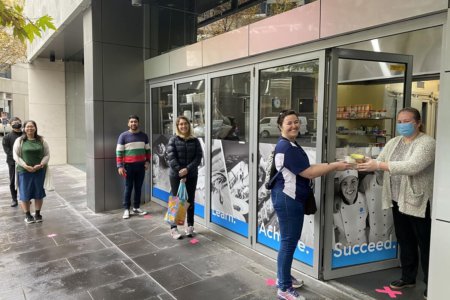
Interest in becoming teachers and educators are rapidly dwindling in Australia. The teacher shortage propelled the country’s state and federal education ministers to strategise. The “National Teacher Workforce Action Plan” due to launch December of this year, highlights five priority areas: “elevating” the teaching profession, improving teacher supply, strengthening teaching degrees, maximising teachers’ time to teach, and a better understanding of future workforce needs.
The main issue the plan assumes to tackle is “strengthening initial teacher education”, according to an article by The Conversation. Initial teacher education refers to the university degree students undertake to become registered classroom teachers. This was chosen due to worries revolving around the amount of students that end up not completing their teaching degrees.
Beryl Exley and Donna Pendergast, both professors at Griffith Institute for Educational Research, Griffith University, have banded together and suggested four ways on how the Australian government can help accelerate the pace at which students graduate from their teaching degrees and renew interest in initial teacher education.
Education Ministers are agreeing to sign off on a national workforce strategy before the end of the year, to try to ease teacher shortages | @ChloeBouras pic.twitter.com/FWKmqgye5J
— 10 News First (@10NewsFirst) August 12, 2022
Is teacher shortage even a problem?
Facts and figures from the Australian Institute for Teaching and School Leadership show that there has been an increase in students signing up for initial teacher education courses. From the years 2005 to 2019, the number of enrolments rose from 24,285 students to 28,694. So where does this apparent teacher shortage notion come from?
When considering natural attrition, the numbers are more than enough to sustain the teaching workforce — but the data for programme completion is proven to be significantly lower. The study found that the number of students graduating from all fields of study at university increased by 40% from 2009 to 2019, but the number of students graduating from teacher education declined by 5%.
Here’s why:
 Working as a teacher isn't as simple as it sounds. Their work extends beyond the four walls of a classroom most of the time. Source: Sergey Bobok
Working as a teacher isn't as simple as it sounds. Their work extends beyond the four walls of a classroom most of the time. Source: Sergey Bobok
Unreasonable testing demands
LANTITE, the national Literacy and Numeracy Test for initial teacher education, is an unreasonable two-hour literacy test and a two-hour numeracy test, undertaken in formal exam-like conditions. All student teachers must pass both components in order to graduate. Logistical challenges make it hard to pass the LANTITE, and opportunities to sit the test are limited to four testing windows a year. Not to mention in-person testing centres are held in a relatively small number of locations.
This in turn, forces student teachers from regional and rural areas who prefer to attend a physical test centre to bear the extra effort, time, and money needed to travel and get accommodation for testing seasons. It sounds hard enough, until you take into account the costs of sitting for the exam — AUD$196 per attempt.
According to those who sat for the test before, it is not only highly stressful, but also expensive and not an accurate indicator of teacher quality.
 Students' supposed "failures" are blamed on their teachers, at least according to experts in Australia. Source: Jean-Francois Monier
Students' supposed "failures" are blamed on their teachers, at least according to experts in Australia. Source: Jean-Francois Monier
Getting qualified comes at a cost
Student teachers must undertake uninterrupted blocks of professional experience in schools in each year of their degree. While this is a critical part of the degree, it comes at great personal cost. The intensity of the professional placement, including full days in schools and time spent in the evenings gathering resources, planning lessons and marking students’ work, means student teachers can’t do other paid work.
It may mean they can’t earn an income for up to six weeks at a time. On top of this, there are also travel expenses to get to school each day. They may also need to buy stationery and resources to use in their lessons. A guaranteed stipend that takes into account the real costs of undertaking a teaching placement is essential.
A permanent job is not always in the cards
Surprisingly enough, the teacher shortage has not resulted in student teachers gaining full-time employment. Very few manage to secure permanent employment in their preferred subjects, especially in city areas.
The greatest need for teachers, and the greatest opportunity for permanent employment, is in rural and remote areas. However, it is not possible for all graduates to relocate for work. This mismatch is causing new teachers to look for jobs close to home. The result? They are forced to cobble together a series of part time or short-term contracts, across a range of schools, year levels and subjects. While they are qualified to teach, they have to resort to teaching out of their field of expertise.
 Student teachers have to resort to teaching subjects they are not qualified to teach just to be able to work close to home. Source: Michael Loccisano/Getty Images North America/Getty Images via AFP
Student teachers have to resort to teaching subjects they are not qualified to teach just to be able to work close to home. Source: Michael Loccisano/Getty Images North America/Getty Images via AFP
Blame game and disrespect towards the profession
In March 2022, when then-federal education minister Stuart Robert blamed “dud public school teachers” for the decline of academic results of Australian students. This “teacher bashing” is not new, as recent studies suggest that media reporting on teachers in Australia for the past 25 years have included a whole lot of it.
Making the profession seem simple and easy also contributed to the public having less respect towards teachers, whom are the scapegoats of their children’s academic abilities. This sort of reporting “devalues the profession and weighs heavily on students when they are considering their commitment to their teaching studies”, says Exley and Pendergast.
“We need to make sure student teachers know they are doing important and complex work and that it is valued by the schools and communities where they teach,” they add.![]()
By Beryl Exley, Professor, Griffith Institute for Educational Research, Griffith University, Griffith University and Donna Pendergast, Professor, Griffith Institute for Educational Research, Griffith University, Griffith University
This article is republished from The Conversation under a Creative Commons license. Read the original article.










